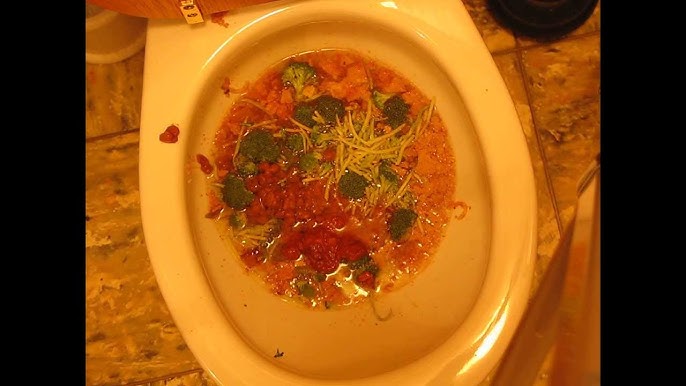Presented here in the next paragraphs you will discover a good deal of incredibly good expertise pertaining to Flushing Food Down the Toilet?.

Intro
Many individuals are frequently faced with the predicament of what to do with food waste, especially when it concerns leftovers or scraps. One usual inquiry that arises is whether it's fine to purge food down the commode. In this post, we'll delve into the reasons that individuals may think about purging food, the consequences of doing so, and alternate techniques for appropriate disposal.
Reasons why individuals may think about purging food
Absence of understanding
Some individuals might not recognize the possible damage triggered by purging food down the toilet. They may incorrectly believe that it's a safe practice.
Benefit
Flushing food down the toilet may feel like a fast and easy solution to disposing of unwanted scraps, particularly when there's no neighboring garbage can available.
Laziness
In some cases, people may just pick to flush food out of sheer negligence, without considering the effects of their actions.
Consequences of flushing food down the commode
Ecological effect
Food waste that ends up in waterways can contribute to pollution and damage aquatic ecological communities. Furthermore, the water made use of to flush food can stress water sources.
Plumbing problems
Purging food can bring about clogged pipelines and drains, causing expensive plumbing fixings and aggravations.
Types of food that should not be purged
Fibrous foods
Foods with fibrous appearances such as celery or corn husks can obtain tangled in pipes and create obstructions.
Starchy foods
Starchy foods like pasta and rice can take in water and swell, bring about clogs in pipes.
Oils and fats
Greasy foods like bacon or cooking oils need to never be flushed down the toilet as they can strengthen and create obstructions.
Correct disposal methods for food waste
Utilizing a garbage disposal
For homes furnished with garbage disposals, food scraps can be ground up and purged via the plumbing system. Nevertheless, not all foods are suitable for disposal in this manner.
Recycling
Specific food packaging products can be reused, reducing waste and lessening environmental effect.
Composting
Composting is an environmentally friendly method to take care of food waste. Organic materials can be composted and utilized to enhance dirt for gardening.
The importance of proper waste monitoring
Minimizing ecological injury
Proper waste management practices, such as composting and recycling, aid reduce pollution and preserve natural deposits for future generations.
Protecting plumbing systems
By preventing the technique of flushing food down the bathroom, homeowners can avoid pricey plumbing repairs and maintain the integrity of their plumbing systems.
Conclusion
In conclusion, while it may be alluring to purge food down the bathroom for comfort, it is very important to understand the possible consequences of this action. By taking on appropriate waste administration methods and disposing of food waste properly, individuals can add to much healthier pipes systems and a cleaner atmosphere for all.
FLUSH FOOD DOWN THE TOILET?
FLUSHING FOOD CAN CAUSE BLOCKED DRAINS IN YOUR HOME
All of the plumbing fixtures in your home are connected to the same sewer pipe outside of your home. This outdoor sewer pipe is responsible for transporting all the wastewater from your home to the Council sewer mains. Even small pieces of food that go down the kitchen sink can cause problems for your sewer. It should therefore be obvious that flushing larger bits of food, such as meat, risks a clog in either the toilet itself or the sewer pipes. Flushing greasy food is even more problematic because oil coagulates when it cools, coating the interior lining of your pipes.
THE TOILET IS NOT A BIN
Food isn’t the only thing that people shouldn’t be flushing down the toilet. People use the toilet to dispose of all kinds of things such as tampons, makeup wipes, dental floss, kitty litter and even underwear. Water goes to great lengths to educate residents about the high costs and stress placed on wastewater treatment systems simply from people flushing the wrong stuff down the toilet. It costs taxpayers millions of dollars each year, and homeowners thousands in blocked drain repairs.
FLUSHING FOOD IS A WASTE OF WATER
Flushing food is a waste of our most precious resource - water. In June this year Level 1 water restrictions were introduced to protect water supply from drought conditions. Much of New South Wales continues to be affected by prolonged drought with recent figures revealing up to 97 per cent of the state remains in drought. Depending on whether you have a single or dual flush toilet, every single flush uses between five and 11 litres of water. In the current climate this is a huge amount of water to be wasting on flushing food that should be placed in the bin (or better yet, the compost).
https://www.jabplumbingsolutions.com.au/blog/can-you-flush-food-down-the-toilet

As an enthusiastic reader on What Can Happen If You Flush Food Down the Toilet?, I thought sharing that chunk was a great idea. Sharing is nice. Helping others is fun. I praise you for being here. Come back soon.
Go Deal
Comments on “Can You to Flush Food Down the Toilet?”